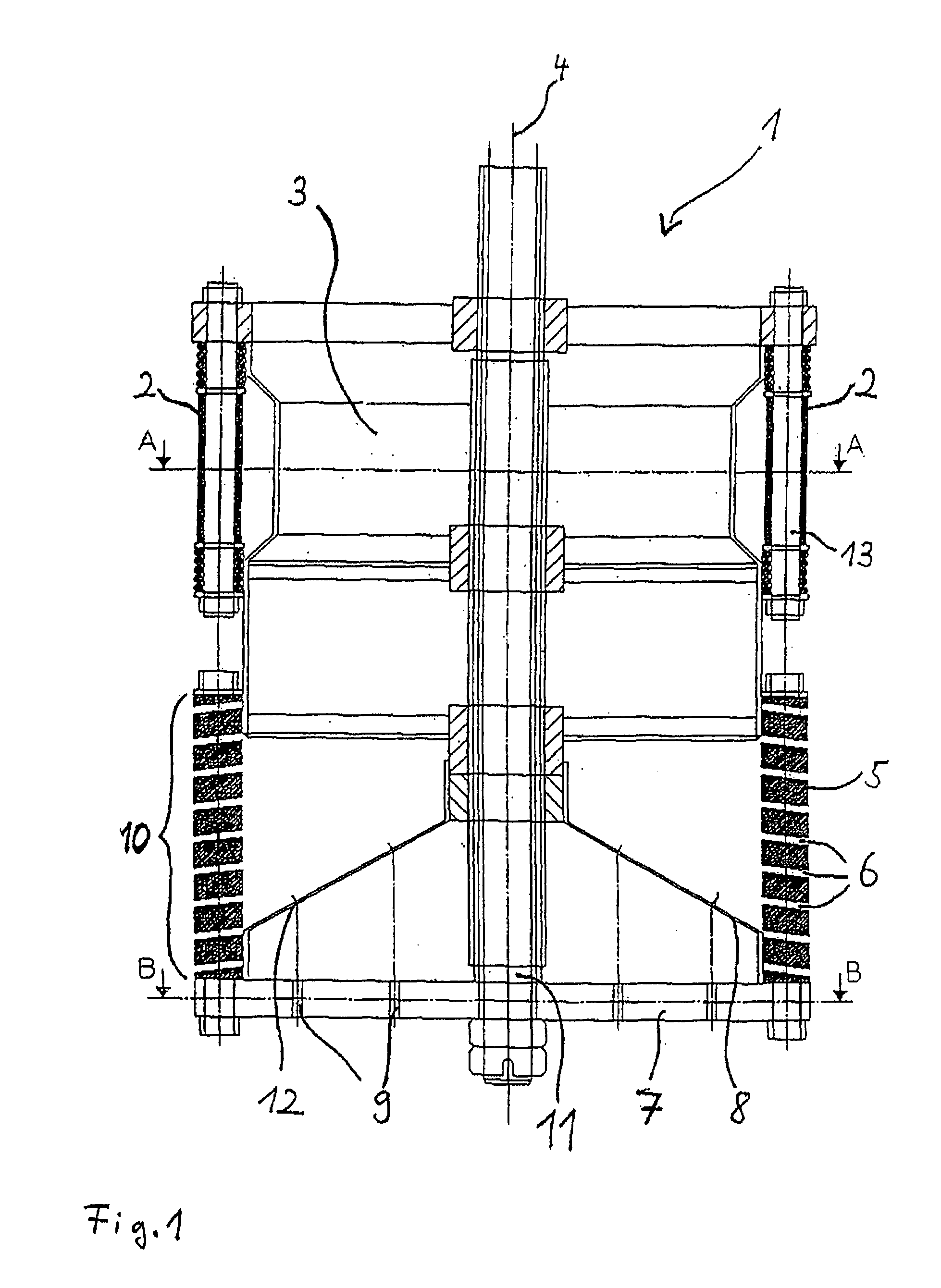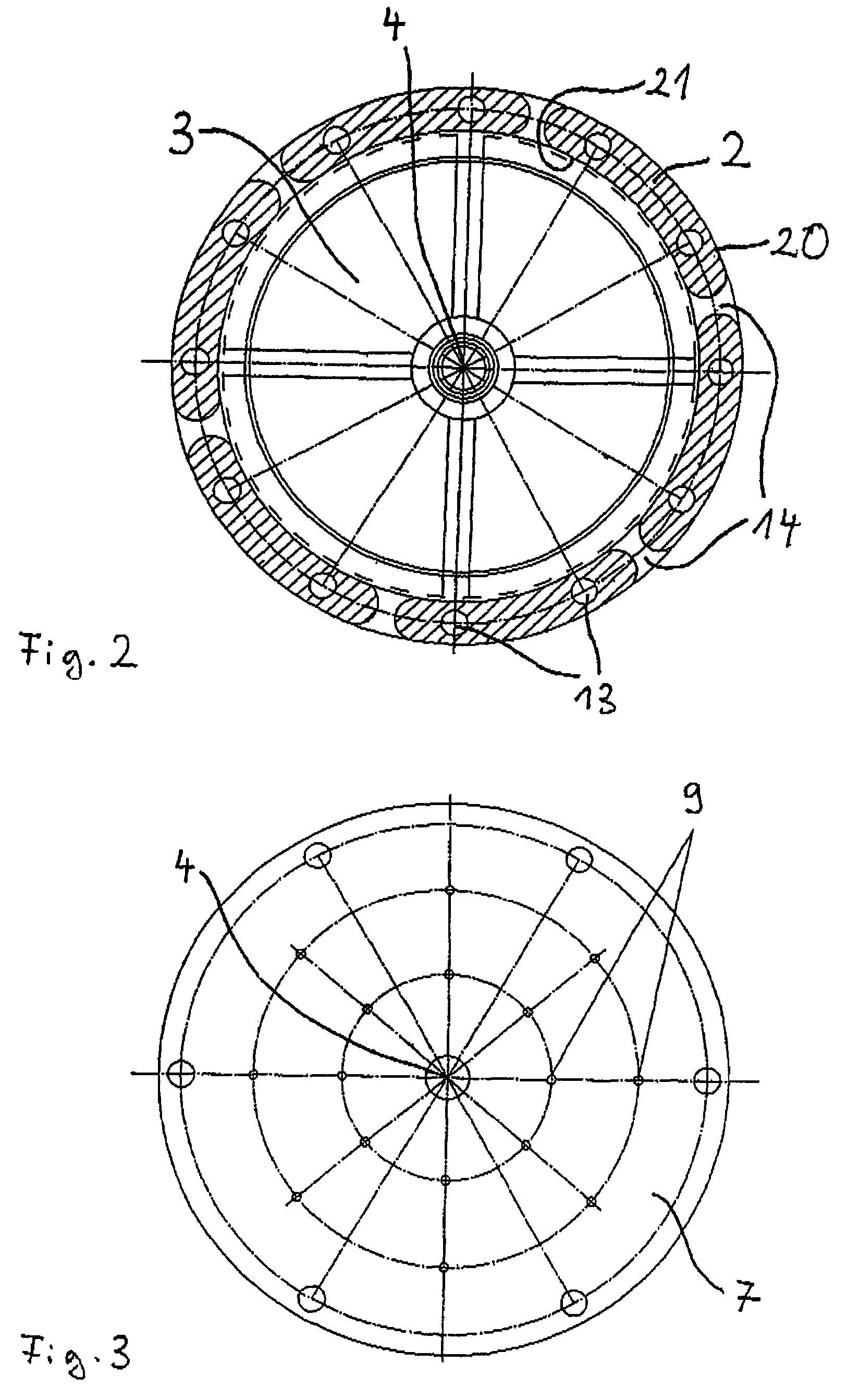Device for spraying water
a technology for thermal power plants and water tanks, which is applied in the direction of nuclear elements, metal/metal-oxide/metal-hydroxide catalysts, and the nature of treatment water, etc. it can solve the problems of increasing the maintenance interval of the water-steam circuit, bringing cost advantages, and increasing the life of the components arranged in it, so as to increase the operational safety of the power plant and reduce the cost. , the effect of low expenditur
- Summary
- Abstract
- Description
- Claims
- Application Information
AI Technical Summary
Benefits of technology
Problems solved by technology
Method used
Image
Examples
Embodiment Construction
.
[0040]FIG. 1 illustrates a spraying device 1 with which the water to be degasified in a feedwater tank of a thermal power plant sprays and with which the gas discharged from the water is converted by a catalyst. The spraying device 1 is orientated in accordance with FIG. 1 in the feedwater tank that is not illustrated, i.e. the water is sprayed by a spray area 10 that is arranged in the lower area of the spraying device 1 while the conversion of the gases takes place on the catalyst that is arranged in an upper area of the spraying device 1.
[0041]The spraying device 1 has a cylinder symmetry wherein the axial direction (longitudinal direction) is defined by an axis 4. The spray area 10 is provided for spraying the water to be degasified. This spray area 10 has a spray spring 5 in the covering area 30 of the spraying device 1. The spray spring 5 has spring slots 6 as spray openings.
[0042]For converting the gas discharged from the sprayed water the spraying device 1 in accordance wit...
PUM
| Property | Measurement | Unit |
|---|---|---|
| area | aaaaa | aaaaa |
| tension | aaaaa | aaaaa |
| spray areas | aaaaa | aaaaa |
Abstract
Description
Claims
Application Information
 Login to View More
Login to View More - R&D
- Intellectual Property
- Life Sciences
- Materials
- Tech Scout
- Unparalleled Data Quality
- Higher Quality Content
- 60% Fewer Hallucinations
Browse by: Latest US Patents, China's latest patents, Technical Efficacy Thesaurus, Application Domain, Technology Topic, Popular Technical Reports.
© 2025 PatSnap. All rights reserved.Legal|Privacy policy|Modern Slavery Act Transparency Statement|Sitemap|About US| Contact US: help@patsnap.com



